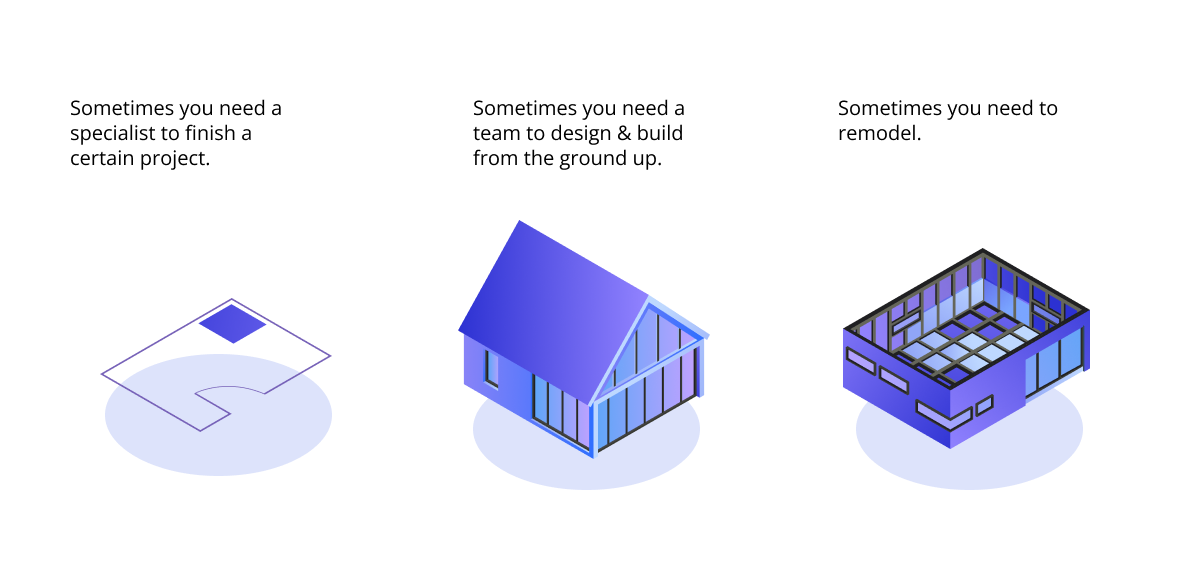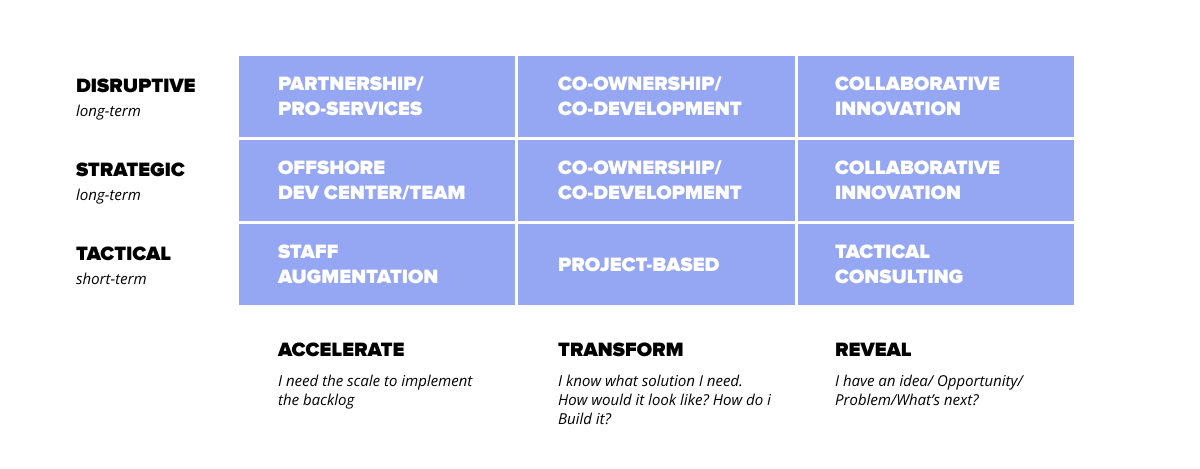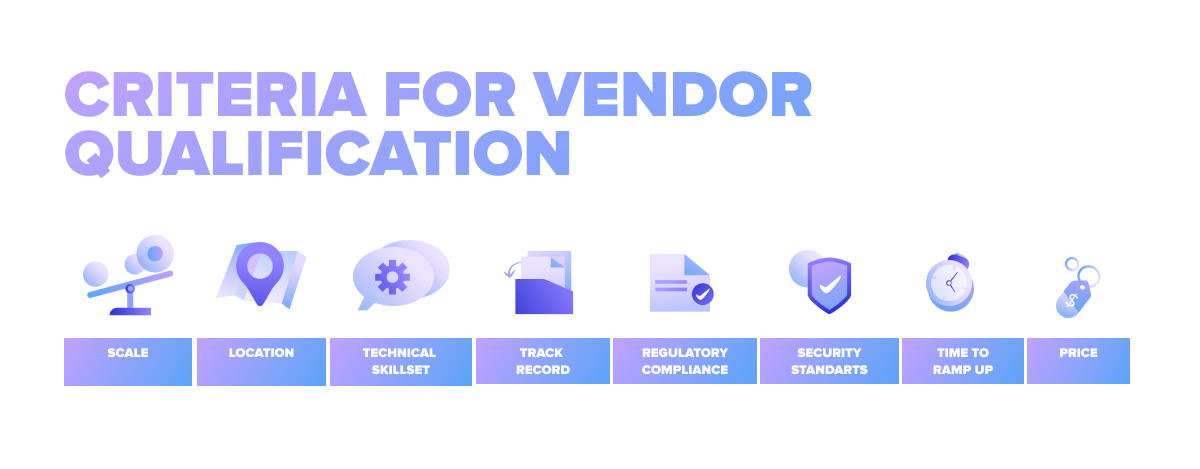
A global pandemic accelerated digitalization and reminded us that we couldn't predict the future. But observing the pandemic's impact and keeping an eye on the latest resulting software development trends gives us actionable insight.
COVID-19 forced companies to reshape their work landscape on the go. As a result, tech expertise is mission-critical for businesses inside and outside the IT sector. The quest for these transformative solutions spotlight some of the hottest market trends shaping the IT market in 2022.
Current market trends in sourcing, hiring, and retaining top tech talent
The shift to remote work and the growing need for tech talent has heavily affected the IT market. Modern-day demand for tech professionals across all sectors constantly outstrips supply, making sourcing, hiring, and retaining tech talent a tall task. But will this change soon? Here are the challenges we see, and the trends emerging.
Let’s look at the hottest trends and challenges the tech talent market is facing in 2022 and the possible ways to handle them.
Tech talent shortage
A growing number of IT leaders see the talent shortage as a considerable barrier to adopting emerging technologies.
A Korn Ferry report shows that a labor-skills shortage in the tech sector will reach 4.3M workers by 2030.
It could mean losing $162B worth of revenues annually for the US only.
Unparalleled demand for capacity and speed
Companies need to implement new features and scale up quickly to keep up with market demands and competition, even when digital talent attraction and retention are challenging. Extending teams with remote engineering services can give businesses a competitive advantage by quickly filling the required skill gap or offering niche expertise based on technical advisory.
So, it's crucial to partner with the right engineering team offering flexibility and scalability in terms of options. Can this partner provide the resources and services for a proper time frame? Can it increase or decrease that team quickly?
Coaching and knowledge model development
Today, CIOs consider knowledge and expertise more important than money, making engineering excellence standards crucial to retain top tech talent. For this, organizations need to build a knowledge model and motivate employees to develop professionally.
Case in point: a TalentLMS and Workable survey proves that about 90% of tech professionals are willing to receive more learning and development opportunities from their company.
Organizations that recognize this need for tech talent to develop their hard and soft skills have a higher chance of retaining top players.
At SoftServe, we understood that the best way to build our future is to help associates develop themselves. We established SoftServe University in 2006 as a corporate learning hub to equip associates with in-demand managerial and leadership competencies, plus IT skills. As a result, this learning ecosystem protects the company from staff shortages, allowing SoftServe to effectively develop employees and form a new generation of leaders.
More digitally enabled and elastic workforce
Fortune 500 companies such as Google extend their teams with an on-demand workforce, even though they're big enough and can afford any talent in any region. Why do they do that?
They avoid infrastructure anti-fragility and prioritize resilience. Keeping 100% of a team in-house is fragile, especially if crises or disruptions occur.
Partnering with service providers gives organizations the capacity to manage abrupt fluctuations in demand, which results in faster ramp-ups and fewer delays. Building a strategic partnership with niche players—someone who can consult or deliver the best service in the specific domain—helps organizations remain agile and stay ahead of the curve.
Now that you're familiar with the trends in the tech talent market, let's look at the needs companies face and ways they can fulfill them.
Needs in software development: What we hear from our clients
The global pandemic has forced companies to focus on fundamentals such as investing in digital transformation and ensuring operations are agile, resilient, and secure. Keeping up the pace of growth with internal technical expertise and responding to market demands are major challenges companies face today. There are other challenges, as well:
- The need to scale up and down quickly
- The lack of internal knowledge and expertise
- Limited access to local talent
- The slow onboarding process for local specialists
- Difficult and time-consuming training
- Correlation between the quality standards in services and the skills of teams
To give you a better picture, let's compare your business needs and challenges to building a house. Let’s say, for instance, you need a minor repair in one room. It would be analogous to a standalone or silo project requiring changes in one of your business lines. Such short-term projects may need very narrow, niche expertise. So, hiring professionals and then maintaining this expertise in-house makes no sense. You’d probably do it yourself.

The situation is different when you need to build a new house from scratch. Or worse, overhaul and live in it during the process. This context will directly impact your business and cooperation, engagement, and delivery models, as illustrated in the table below.

Define your business needs, the outcomes you expect, and the acceptance criteria before commencing a project to get a successful output. Then tackle business challenges by:
- Collaborating with a partner that can scale up or down on demand (with no padding)
- Consulting with advisors to identify the expertise needed
- Being flexible in terms of talent, pricing, scalability, or remote capabilities
Start with consulting services if you find it challenging to define what is right for your business. An experienced partner such as SoftServe can help build business digitization or upkeep strategy and a roadmap to initiate it.
Software development trends: What the future holds for us
This year, CIOs and IT leaders will continue to adopt emerging technologies to help them recover from the pandemic and meet the growing expectations of the market. COVID-19 has pushed many companies to strive for massive digitization of their services and infrastructures. This trend will remain in 2022.
We see these software development trends disrupting today's tech market.
AI and associated technologies
Implementing artificial intelligence and machine learning will continue to be on top of many companies' initiatives, with AutoML (automatic machine learning) revving into gear. AutoML enables developers with limited ML expertise to train business-specific high-quality models. Given the global shortage of ML professionals, the ability of AutoML to augment machine learning experts will thrive.
SoftServe developed a solution that provides highly personalized investment recommendations using Google Cloud's advanced data analytics and AI/ML such as AutoML.
Cloud-native technologies
Cloud-native is another trend aiming to accelerate business velocity and agility. It will empower companies to build and run scalable applications in public, private, and hybrid clouds. Core features such as containers, microservices, immutable infrastructure, and declarative APIs enable building loosely coupled systems to embrace rapid change.
As a result, you can instantly update small areas of a live, complex application without having to completely redeploy it. This allows scaling services wherever and whenever you need to.
Cybersecurity
The overflow of ransomware and high-profile data breaches in the last two years forced IT organizations to ramp up cybersecurity activities to minimize corporate risk. It’s widely reported that approximately half of companies see increased cybersecurity protection as the top business initiative driving IT investments this year.
One of the ways to build a secure work environment is to use dedicated wireless broadband on top of security approaches like two-factor authentication. This can help tech teams avoid online vulnerability while working remotely.
Automation of routine tasks
Robotic process automation (RPA) will be a trend that helps to accelerate digital transformation and achieve higher efficiency in the software development space. Simply put, RPA means using bots to automate routine, redundant tasks within software applications and help developers be more productive.
RPA is a noninvasive technology, which doesn’t require application modifications for integration. It’s an optimal choice for workflow automation involving legacy systems that don't have APIs or database access. So it's no surprise that Precedence Research projects this trend to hit around $23.9B by 2030.
Check out SoftServe's RPA demo for retail business.
Remote development teams
GitHub's 2021 State of the Octoverse report found that the number of companies employing fully remote workers are expected to increase by 46% compared to 16% before the pandemic. This positively influenced the offshore software development services market.
Given the tech talent shortage and the need to keep up with the industry's ever-changing demands, many businesses will turn to software development companies for tech expertise outside their area (either nearshore or offshore).
That was the reason why one of our clients, a financial software company, considered using offshore enterprise software development services to extend their team. Let's take a closer look.
Case Study: Partnering with a financial software vendor to keep up with commercial requirements
Our client is a financial software company with an application more than 20 years old at the core of operations. Constant legislation changes required continuous maintenance. A commercial requirement was their impetus to replace the legacy application with a cloud-based solution. The existing in-house team was not an option because they lacked the required skill set, and maintaining the existing application occupied their time.
The company's leadership chose the exploration of external software development services to produce the replacement build. What the client expected from the potential vendor was:
- Scalability (according to the rough calculations, the company might need 50 skilled resources to meet project commitments)
- Deep expertise and skills to make rounded scrum teams (engineers, scrum masters, business analysts, QAs, and architects)
- On-site interaction
- A willingness to work in the organization’s local time zone
- The option to fix-price the project after the discovery phase
The financial software company wanted a strategic partner, not just a solution supplier. They sought an organization that would balance short-term goals with creating a foundation for future solution maintainability.
So, the company split the project into two phases:
- Discovery phase. The candidates analyzed the existing solution in-depth and documented its features and how things worked. The outcome the client expected was a very detailed time and cost estimate.
- Full commitment. Fixed-price and fixed-scope project.
The company used the following qualification criteria to find the right partner for its software transformation.

Choosing SoftServe as a partner provided diverse technological capabilities that integrated legacy technical components into an innovative, secure, and scalable cloud-enabled product.
Connecting the dots
The pandemic has proven that most big companies can successfully operate remotely. It also made a digital presence crucial to survive and thrive. Much of market wasn't ready for this turn of events, and it resulted in global tech talent shortage. Consequently, companies must adopt new ways to engage with tech experts in a virtual environment.
With the market demanding businesses to be agile and quickly scale, extending in-house resources with remote development teams has become a new rule for filling the gap of tech expertise.
Automation of repetitive processes, stronger focus on cybersecurity, transition to the cloud, and extended teams—all these software development trends will accelerate software delivery despite the constraint in tech talent supply.
SoftServe can help you remain on top of the emerging trends, scaling your team with our relevant expertise. With profound knowledge in healthcare, retail, high-tech, and financial services, we offer collaboration models based on your unique business needs and objectives.
Let's talk about keeping your business on track with emerging trends and how SoftServe can help you increase productivity with flexible tech resources.

